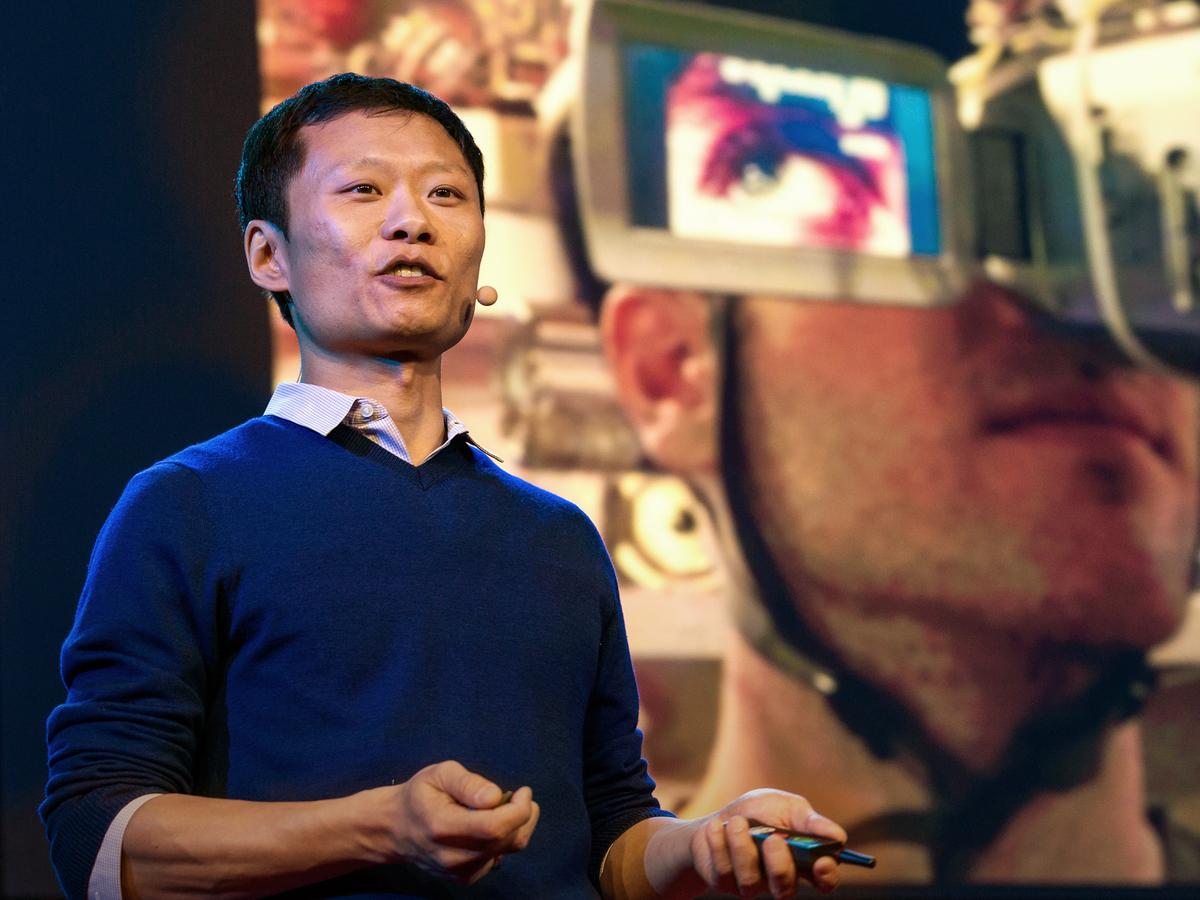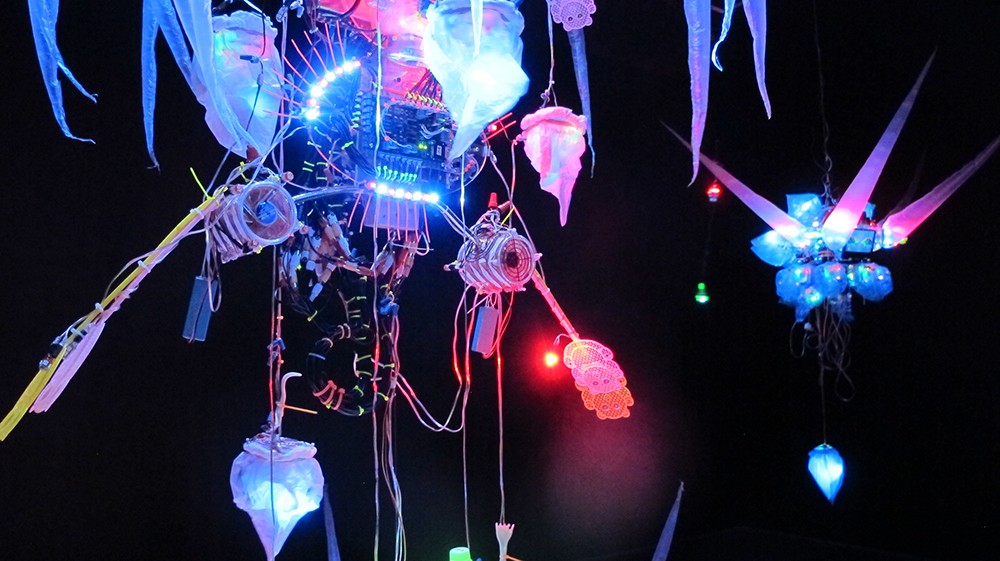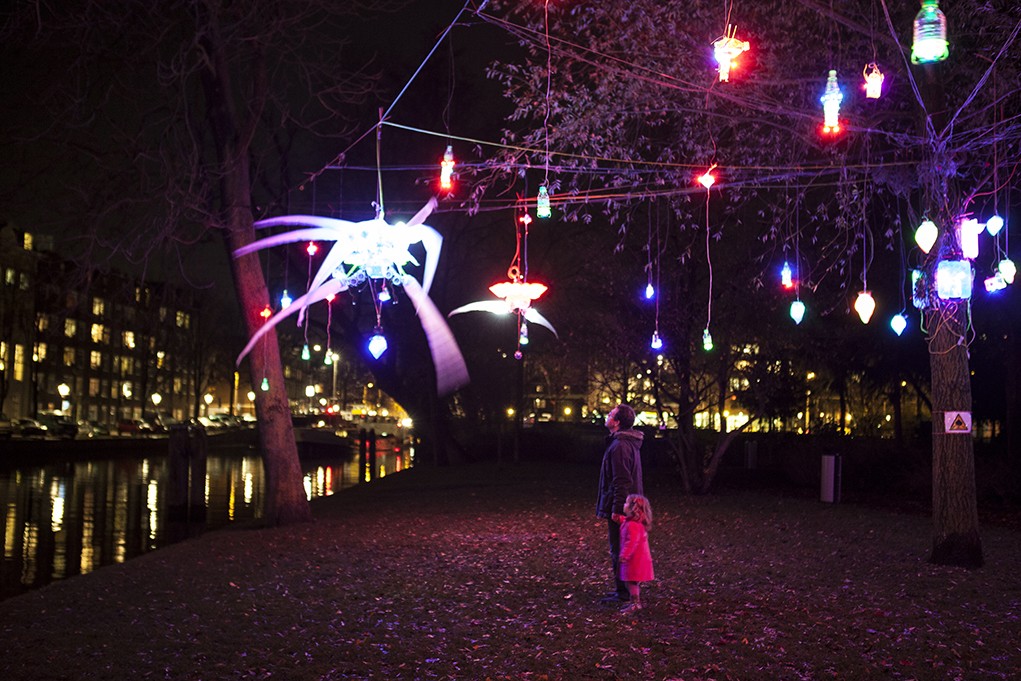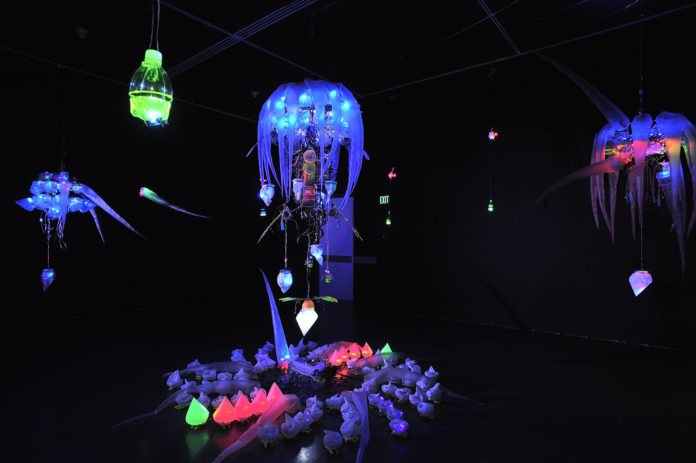 Shih Chieh Huang creates artwork from unlikely sources: rubbish luggage, bioluminescent fish, Christmas mild faders. His motorized sculptures—sensitive tentacles comprised of plastic bags that mild up as they inflate and deflate—take on a life of their personal. They flow like massive sea creatures from an age this is straight away prehistoric and futuristic.
Shih Chieh Huang creates artwork from unlikely sources: rubbish luggage, bioluminescent fish, Christmas mild faders. His motorized sculptures—sensitive tentacles comprised of plastic bags that mild up as they inflate and deflate—take on a life of their personal. They flow like massive sea creatures from an age this is straight away prehistoric and futuristic.
“One habitual idea in my paintings is animating these inanimate items, bringing lifestyles to each day substances,” the Taiwan-born, New York-based artist told UsaARTnewS.
For his modern day exhibition, “Reusable Universes: Shih Chieh Huang,” on view on the Worcester Art Museum via November 12, Huang created a kinetic sculptural set up of extra than a hundred elements—his biggest thus far. it’s far not anything less than otherworldly.

I first encountered Huang’s paintings at the 2016 Armory show, where crowds accumulated around his glowing Disphotic sector, which resembled a large robotic jellyfish. Later that 12 months, at Bushwick Open Studios, I wandered into his big, heavily foot-trafficked area at 17-17 Troutman, which felt like a few sort of abnormal biology lab.

The feeling is different at the museum: The darkened room transports you suddenly to the depths of the ocean, or the far reaches of outer space. It is quiet, peaceful, and reflective.
For this edition of “Origin Story,” which explores the backstories of individual works of art, Huang takes us through the evolution of his work and the process of putting together the immersive installation, Reusable Universes, at the Worcester Museum.
You’ve developed a unique type of motorized sculpture featuring plastic bags. How long have you been making work in this vein?
It goes way back. The earliest I remember, I was in college, in 1995 or ’96, and I bought a mattress that came in a big bag. It was summertime in San Diego, and I wanted to make a cooler space. I used a box fan to inflate the mattress bag with air, and I sat inside.
I was going to use it my working space. Then I thought, this space itself is kind of interesting. I started experimenting with plastic bags of different thicknesses, using different kind of fans. I was using those plastics you get at Home Depot when you’re painting to cover up the furniture. That kind of started the process, just experimenting with these plastics and fan materials.
How did you start animating your sculptures?
At first, I was using basic stuff, like Christmas light faders, a dual two-channel outlet that lets you plug in two different color lights. It alternates the channels to change the color.
I wanted to learn some physical computing, so I snuck into a college class and learned to program. I was able to use the programming method BASIC Stamp to start animating my work. That allowed for more variation of the speed and the rhythm, but I wanted to have more complexity and control of the movement. I was struggling to develop a new control board system for several years. Everything got very, very complicated.
Then I found an app that is used for concerts and theater lighting. It was able to communicate with the board that I had been building, so I didn’t have to write code anymore. I can visually see how everything is controlled; each tentacle, each bag. That really changed how I was able to choreograph these movements for the Worcester show.

























